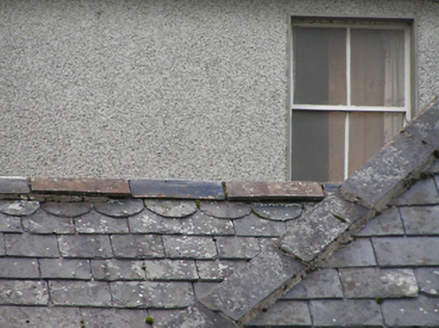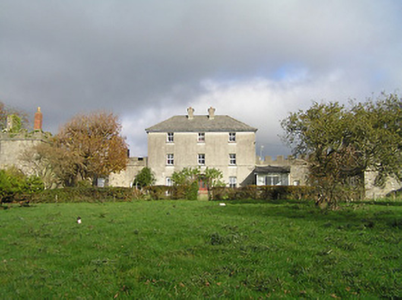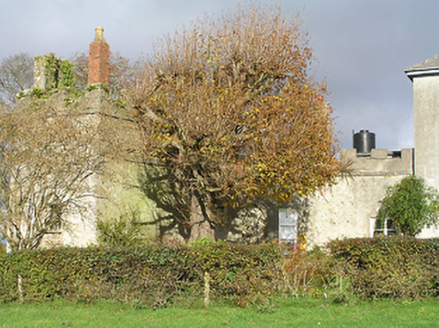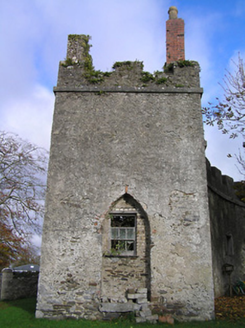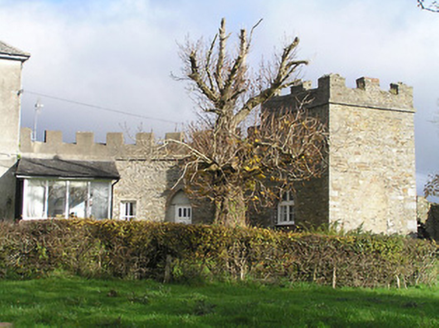Survey Data
Reg No
12401407
Rating
Regional
Categories of Special Interest
Architectural, Historical, Social
Original Use
Garda station/constabulary barracks
In Use As
House
Date
1815 - 1835
Coordinates
250803, 160663
Date Recorded
08/11/2004
Date Updated
--/--/--
Description
Detached three-bay three-storey Royal Irish Constabulary barracks, c.1825, possibly over basement on a symmetrical plan with three-bay single-storey lean-to flanking wings on curved plans terminating in single-bay double-height pavilions on square plans. Part reroofed, c.1950. Mostly refenestrated. Now in residential use. Hipped roof to main block with replacement artificial slate, c.1950, clay ridge tiles, rendered chimney stacks, and iron rainwater goods on timber eaves. Lean-to slate roofs to remainder behind parapets with red brick Running bond chimney stacks, and concealed rainwater goods. Unpainted roughcast walls to main block with random rubble stone walls to remainder having remains of unpainted render over, slight batter to pavilions, and cut-limestone stringcourse supporting unpainted rendered battlemented parapets. Square-headed window openings to main block with cut-limestone sills, and replacement uPVC casement windows retaining some two-over-two timber sash windows. Pointed-arch window openings to remainder in pointed-arch recesses with timber sills, red brick voussoirs, and timber casement windows having overlights. Segmental-headed door opening with glazed timber panelled door having sidelights on panelled risers, and overlight. Set back from road in own grounds.
Appraisal
An elegantly-appointed substantial range representing an important element of the architectural heritage on account of the status as one of the earliest-surviving purpose-built civic institutions in the locality having been intended as a constabulary barracks as indicated on archival editions of the Ordnance Survey: forming part of the Ormonde estate the site reputedly subsequently functioned as an estate agent's house. Although alluding to the arrangement of the 'economic villa' developed by Andrea Palladio (1508-80) whereby a central block is linked to pavilions by lateral wings the composition also recalls a later (c.1850) constabulary barracks in nearby Clomantagh (12401306/KK-13-06). Further enhancing the aesthetic value of the site is the almost Free-style juxtaposition of a Classically-detailed central portion framed by flanking ranges exhibiting Gothic-derived battlements. While the retention of most of the original form and massing maintains most of the integrity of the composition the continued replacement of the historic fabric with inappropriate modern materials threatens to further undermine the character of the site.
